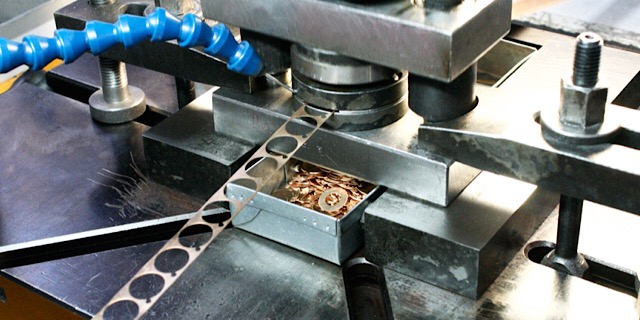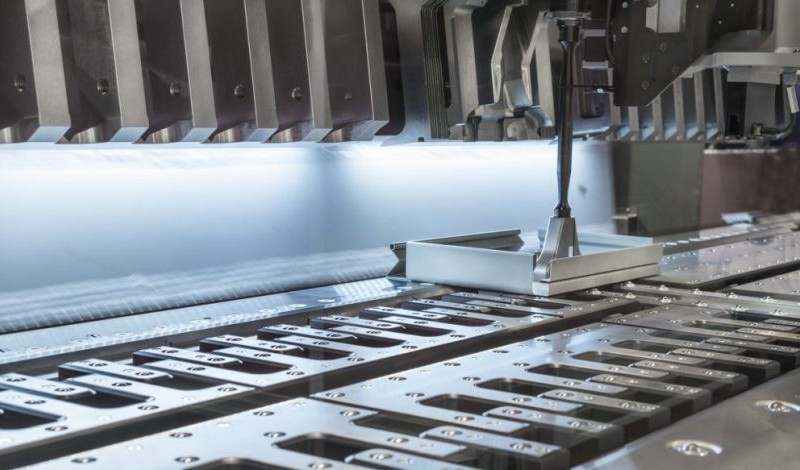Ultimate Overview to Metal Stamping Techniques and Applications
Ultimate Overview to Metal Stamping Techniques and Applications
Blog Article
Steel Stamping Advancements: Elevating Manufacturing Processes for Superior Outcomes
In the realm of manufacturing processes, steel marking has actually long been a keystone method for producing a range of accuracy components. With the unrelenting march of technical innovation, the landscape of steel marking is undergoing a considerable change.
Development of Metal Marking Methods

In addition, improvements in product science have led to the advancement of high-strength alloys that can currently be flawlessly stamped into detailed shapes, accommodating a more comprehensive variety of commercial applications. The combination of robotics and expert system has actually further enhanced the stamping process by improving speed and precision while minimizing the threat of human mistake.

Effect of Advanced Materials
Have sophisticated products transformed steel marking processes considerably in the manufacturing sector? The solution is an unquestionable yes (Metal Stamping). The assimilation of sophisticated products has actually reinvented steel marking, allowing manufacturers to attain higher accuracy, boosted efficiency, and enhanced item high quality. By utilizing products such as high-strength alloys, advanced composites, and ingenious layers, metal stamping procedures can currently create parts that are lighter, stronger, and extra durable than in the past.
These innovative products offer remarkable mechanical residential properties, corrosion resistance, and thermal stability, permitting makers to meet the needs of modern markets such as aerospace, automobile, and electronic devices. In addition, the use of advanced materials in steel marking has helped with the production of complex geometries and elaborate layouts that were previously unattainable via traditional methods.
Additionally, the application of innovative materials has resulted in decreased material waste, reduced manufacturing expenses, and shorter lead times, making metal stamping procedures more cost-effective and sustainable. As innovation proceeds to advance, the impact of innovative materials on steel marking processes is anticipated to drive more innovation and enhance the competition of makers in the worldwide market.
Automation in Metal Stamping
The evolution of metal marking processes driven by the integration of innovative products has set the stage for substantial innovations in automation within the production market. Automation in metal stamping has reinvented production processes, boosting performance, accuracy, and overall outcome quality. Via the use of robotics, sensors, and computer-controlled systems, jobs that were taxing and as soon as hands-on can now be executed with exceptional speed and accuracy.
Automation in metal stamping not just accelerates production prices yet additionally makes sure consistency in the production process. By decreasing human intervention, the threat of errors is significantly lowered, resulting in greater levels of item harmony and reliability. Furthermore, automation makes it possible for makers to take on complex stamping jobs that would be tough or impractical to achieve by hand.
In addition, automation in metal stamping adds to a safer working see atmosphere by reducing the requirement for staff members to take part in dangerous or repeated jobs - Metal Stamping. This shift in the direction of automation not just enhances efficiency however additionally paves the way for the future of production, where technology plays a central role in driving operational excellence
Quality Assurance and Examination Systems
With a focus on precision and dependability, quality assurance and examination systems click resources play a critical duty in guaranteeing product excellence in metal stamping processes. These systems are created to monitor every stage of production, from product examination to the end product, to ensure that all parts meet the needed standards. By carrying out innovative technologies such as optical examination systems, coordinate determining devices (CMM), and automated evaluating tools, makers can detect even the smallest deviations in measurements, surface area quality, and total honesty of stamped parts.

Sustainability Practices in Steel Stamping
Structure upon the structure of accuracy and dependability developed with quality assurance and assessment systems, the combination of sustainable practices in metal marking processes is increasingly becoming a focal point for manufacturers seeking to decrease ecological influence and maximize resource utilization. Sustainability techniques in steel stamping encompass a variety of efforts focused on reducing waste generation, power intake, and greenhouse gas discharges throughout the manufacturing procedure.
One secret aspect of sustainability in metal marking is the fostering of eco-friendly products and innovations that promote recyclability and waste decrease. By making use of recycled products and implementing energy-efficient equipment, makers can decrease their carbon impact and add to a more lasting manufacturing cycle. Furthermore, optimizing manufacturing processes to minimize product waste and energy use not just benefits the environment however also brings about cost financial savings for services over time.
In addition, the implementation of lasting techniques in steel marking can improve brand name credibility and interest eco mindful customers. As sustainability remains to get importance in the production market, incorporating green initiatives into steel stamping processes is essential for long-lasting success and competition on the market.
Verdict
In final thought, steel marking strategies have actually substantially advanced in time, including advanced materials and automation to improve producing procedures. Quality assurance and evaluation systems play a critical role in guaranteeing remarkable results, while sustainability practices are increasingly being executed to reduce environmental influence. These technologies in metal stamping have transformed the industry, causing extra efficient and sustainable production approaches for various industries.
Metal stamping, once a manual and labor-intensive process, has actually changed into an extremely automated index and advanced technique of shaping metal sheets into various types and styles.Have innovative products transformed metal stamping processes considerably in the manufacturing market? By using materials such as high-strength alloys, progressed compounds, and ingenious finishes, metal stamping procedures can currently create components that are lighter, stronger, and extra sturdy than ever before.
The evolution of steel marking processes driven by the integration of innovative products has set the stage for substantial innovations in automation within the production market.In conclusion, steel marking methods have considerably evolved over time, incorporating innovative products and automation to enhance manufacturing procedures.
Report this page